Cultural Resources
| The Harlem Gospel Choir | The Gospel in 4 Minutes by Sho Baraka |
Unashamed Mime Troupe |
CHOIR AND WORSHIP ARTS DAY
CULTURAL RESOURCES
Sunday, August 12, 2012
Dana Brocks, Guest Cultural Resource Commentator
Fine Arts Director, Friendship-West Baptist Church, Dallas, TX
I. History
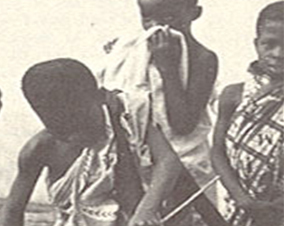 |
Music has long been a golden thread in the fabric of the African American Church and community. Our African heritage is rich with music, dance, and storytelling [all sacred] and serving distinct purposes— religious, agricultural, fertility, hunting, and war. As with most of our African history, music has been orally transmitted from generation to generation. Western civilization and others were intentional in the suppression of African music especially among slaves. |
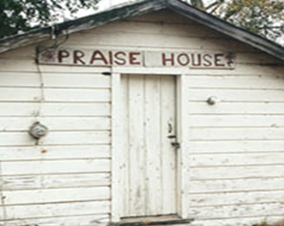 |
Because of this suppression, new forms of music were fashioned by Africans in America. However, traditional African styles of harmony, call and response, and strong rhythmic beats were kept. Michael Tanner notes in his article, “The Gospel According to Brother Michael,” “All African music was naturally sacred and the concept of singing secular music was alien to them.”1 Slaves, who were allowed to commune together in worship, used this opportunity for self expression with their music [and dance]. |
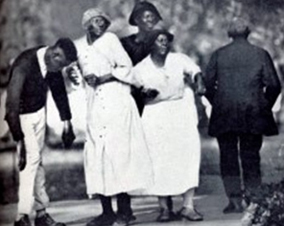 |
No one can deny that from the beginning of time, dance has had a ritualistic core to it as well. “Primitive” cave writings denote the use of dance in rituals; dance and music were partners. Barbara Glass writes in African American Dance: An Illustrated History, “African Dance . . . was one of the most important of the cultural arts carried across the Middle Passage . . . it commemorated the important events in the lives of the people, provided means of self-expression, gave rise to arts such as mask and costume making and connected them to God.”2 Traditional African dance characteristics included circle and line formations (or ring dance), pantomime, orientation to the earth, improvisation, percussion, polyrhythm, and group (social) dancing also known as community dancing. See the video below for more information on ring shouting and dancing. |
This was a strong contrast to traditional European dance which was vertically oriented (example, ballet), geometric patterning in choreography (example, Minuet or cotillion-ballroom), and generally taught to the elite. These dance styles would eventually merge to create many of the dance styles seen today.
As it relates to worship and the church, dance has not had a smooth transition throughout history. Dance as worship dates back to times before the ancient Israelites. It was used in worship celebrations and in celebrations of triumph over an enemy during war. The types of dance used in Israelite society included the circle or ring dance (an African custom), the processional dance, and dances of joy which included whirling or hopping. All of these dance forms were used as expressions of praise and worship to God. But, they also found their way into Pagan ceremonies as well. This would eventually lead to a demise of sacred dance in the church especially as Christianity made its way into the Roman Empire where dance was theatricized and commercialized. Religious dance also became more lascivious and sensual as it took on the forms of dance practiced during pagan rituals. Lucinda Coleman concludes in her article “Worship God in Dance”:
II. Biographical Stories
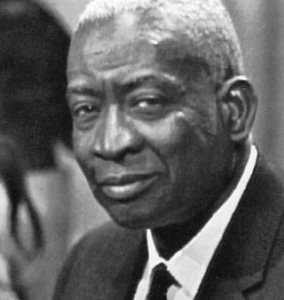 |
It is important that every generation know the significant role that African Americans have played in development of the arts in the area of worship. To celebrate any ‘choir annual day’ and not recognize or be aware of the contribution of Thomas Dorsey would be quite unfortunate. Dorsey is respectfully called the “Father of Gospel Music” due mainly to his use of the term to describe his music and also to the number of songs he wrote that became standard music in churches. Michael Tanner gives a brief history on the influence of Dorsey in his article “The Gospel According to Brother Michael”:
The term “Gospel” existed before W.W.II, but other terms such as “anthems,” “spirituals,” and “jubilees” were more common. After W.W.II a former blues musician and son of a preacher (who used to accompany the widely popular blues singer Bessie Smith), Thomas A. Dorsey converted back to the church and turned his considerable talents to writing religious music. T.A. Dorsey, best known for “Precious Lord, Take My Hand,” is of a pivotal post W.W.II importance when we consider the three elements of his business acumen: He is the first black man to start a black owned music publishing company in America. It is Dorsey’s distinctive style of writing that the majority of choirs use today: a combination of the old hymnody of Watts, and of the African “call and response” sung in country churches. This distinctive style of religious music he insisted should be called “Gospel.” He wanted to disassociate what he felt was a modern style of black religious music from the days of slavery and the distasteful nostalgia of antebellum South. Surprisingly the gospel term stuck retiring “anthems,” “spirituals,” and “jubilees” as an anachronism of past black religious music.
|
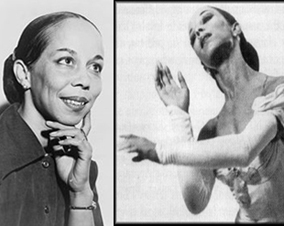 |
It is equally important that we look at the life of African American dancers who have made incredible contributions to the field of dance. How many African American dance ministries know and teach of the life of Janet Collins (1917–2003)? She was the first African American prima ballerina at the Metropolitan Opera. She could not tour in the south due to her race. Collins won the Donaldson Award for her Broadway appearance in Cole Porter’s “Out of This World.” At the age of 15 she was chosen as part of Ballet Russe de Monte Carlo, but when told she would have to paint her face white she refused.5 |
III. Words from a Living Worship & Arts Legend
Ms. Jewell Kelly received her Bachelor’s and Master’s Degrees in Music from North Texas University. She taught high school music in the Fort Worth Independent School District for 50 years before retiring in 2011. She conducted workshops across the United States, Germany, and Japan and has taught and directed church music for over 40 years. A recipient of the Living Legends Award from Hampton University, she is currently the Assistant Minister of Music at Friendship-West Baptist Church in Dallas, Texas. Ms. Kelly reflects:
The others were directed by the keyboardist or instrumentalists. Back then, the average choir contained about 35 people. Since then, church choirs have grown. I guess if you have mega churches, you have mega choirs. And, if the ministries were strong, people were drawn to that church. It’s nothing now to see a choir of about 100. That’s why the ‘stand-up’ director became popular because they needed someone to hold all of those people together. And, ministers thought that choirs were better if they had a ‘stand-up’ director.
The heart of any celebration is going to be music. We use to have musicals every year. It was important in the church. There was an Annual Day where they featured the choir. They would spotlight the music ministry. Many ministries don’t know what their music ministry has. The Annual Day or concerts were an opportunity for people to hear anthems, spirituals, traditional and contemporary gospel all in the same service. Unfortunately, there’s only so much a music director can give you on a Sunday.
It’s really hard work to pull together a full program that’s not just a show. Some people are not committed for the long haul. You just can’t come this week and not come next. You have to be committed. You are in the process of perfecting songs. Sometimes it comes from a leader trying to push for perfection. What the director sees is different from what most choir members see and so the director will push for that perfection and many choir members won’t be committed to that.
Music (to the listener) is dangerous and deceptive because it has so much power. It gets into you and you don’t even know it. For example, most of my high school choirs were predominantly black and sometimes we had to go sing to predominantly white audiences. Most of them were kind of prejudiced because they had a built-in perception that made them say, “Oh here they come hollering again.” Then, all of a sudden, they are crying and they don’t know why. Music has a way of getting to the heart. You can be sitting there looking at your watch waiting for the service to be over and all of a sudden the music touches you. It slips in when it’s effectively done, when it’s done the right way. But, it takes so much work beforehand to get there.
Music has power. It’s preparing the hearts of the people to receive the message. I was an educator before I was a musician in the church. My job in school was to develop the taste of those kids towards music. Most of them came in with a very low ideal of music. But I could teach them how to blend, how to make pleasant sounds. But, I think most people run away from anything that will broaden them. So, sometimes it’s hard to develop ‘the taste’ because most people just want to stay where they are. I think there’s a need to take Black people to another level in music but sometimes we resist change. There is a need for church choirs to evolve. Churches are changing and choirs need to change as well. It’s kind of hard to accept some of the changes, but as Gamaliel said in Acts 5:38-39, “Therefore, in the present case I advise you: Leave these men alone! Let them go! For if their purpose or activity is of human origin, it will fail. But if it is from God, you will not be able to stop these men; you will only find yourselves fighting against God.”
IV. Songs That Speak to the Moment
(Recommended by Ms. Kelly)
The Lord Is My Light
Verse 1
The Lord is my light and my salvation,
the Lord is my light and my salvation,
the Lord is my light and my salvation.
Whom shall I fear?
Chorus
Whom shall I fear?
Whom shall I fear?
The Lord is the strength of my life.
Whom shall I fear?
Verse 2
In the time of trouble He shall hide me,
in the time of trouble He shall hide me,
in the time of trouble He shall hide me.
Whom shall I fear?
Chorus
Verse 3
Wait on the Lord and be of good courage,
wait on the Lord and be of good courage,
wait on the Lord and be of good courage.
Whom shall I fear?6
Chorus
Whatever You Want (God’s Got It)
Chorus: (*Lead sings 1st, then choir follows)
Whatever you want
God’s got it
Whatever you need
God’s got it
Whatever you ask
Just believe it
According to your faith
You can receive it
Eyes have not seen,
Nor ears have heard,
Good things my God has in store
Verse:
My Father’s rich in houses and land
He holds the world in the palm
of His hand
Rubies and diamonds, silver and gold
My Father has riches that’s untold
No need to worry, no to fret
(Choir: My God has everything)
He’s never failed me yet
(Choir: My God has everything)
There is no secret, to what my God can do
If He’s done it for me, He’ll do it for you
Chorus
Vamp:
My God’s got everything (repeat, Lead: sings ad lib)
Whatever you want (repeat as directed)
Ending:
Eyes have not seen
Nor ears have heard (repeat as directed)
Good things my God has in store.7
Total Praise
By Richard Smallwood 
Lord, I will lift mine eyes to the hills
Knowing my help is coming from You
Your peace You give me in time of the storm
You are the source of my strength
You are the strength of my life
I lift my hands in total praise to You.
You are the source of my strength
You are the strength of my life
I lift my hands in total praise to You.
Amen, amen
Amen, amen
Amen, amen
Amen, amen 8
Oh How Precious
By Kathy Taylor Brown 
Lead: When you’re lonely and your heart is filled with despair, remember God cares
Chorus: God cares for you
Lead: And when you’re in doubt and you can’t find your way out, he will see you through, yes he will
Chorus: See you through, see you through
Lead: Just call--------------------
Chorus: Just call on the name of Jesus.
Lead: Just call his name
Chorus: Just call his name out loud.
Lead: Oh-------------- how precious,
Tenor: Oh, how precious
Sap/alto: Precious,
Repeat
Precious is his name------------------
All: Precious is his name.
Repeat verse
Lead: OOOOOh, Oh how precious of Jesus
Chorus: Oh how precious is the name, of Jesus (oooooo)
Lead: He will hear you each time you call
Chorus: Oh how precious is the name of Jesus ooooooo
Lead: I know he’ll pick you up each time you fall...his name is Jesus
Chorus: Jesus (9X)
Tenor: Oh how precious,
Alto/Sap: precious
Repeat
Lead: Precious is his name
OOOOOh Oh how precious
Chorus: Oh how precious is the name of Jesus (oooooo)
Lead: He will hear you each time you call, Oh how precious is the name of Jesus
Chorus : Oh how precious is the name of Jesus, ooooooo
Lead: Can I get a witness, he’ll pick you up every time you fall...his name is Jesus.
Chorus: Jesus (Repeat)
Jesus
Help me call him
If you really know him
Have you tried him Jesus Jesus
My joy in sorrow
My hope for tomorrow
My peace in the midst of a storm
Jesus Jesus
I Love Jesus I Love Jesus
Oooh Jesus
Call him in the morning
Call him in the noon day
Call him in the midnight hour
Jesus Jesus
My way in Jesus
My way out Jesus
My way through Jesus
My way over Jesus, Jesus Jesus
Demons tremble at the name of Jesus Jesus Jesus
I Love Jesus Jesus Jesus Jesus Jesus Jesus Jesus
Can’t Nobody do me like Can’t Nobody Hold me like Jesus Jesus Jesus
My Doctor in the sick room
My Lawyer in the court room
My all and all Jesus Jesus
King of kings Jesus
Lord of Lord Jesus
Way maker Jesus.9
V. Audio Visual Aids
Gospel Music
- Gospel Choir sings “Oh How Precious.” Online location:
http://www.youtube.com/watch?v=4CcmjU0JQzE (accessed 27 January 2012)
- Medley of Great Gospel Choirs . Online location:
http://www.youtube.com/watch?v=qEuxKXd7jDA&feature=youtube_gdata_player
(accessed 27 January 2012)
Dance
- http://www.youtube.com/watch?v=IRGwpAyiGPI&feature=youtube_gdata_player
(accessed 27 January 2012)
- http://www.youtube.com/watch?v=6thSXLMUsks&feature=youtube_gdata_player
(accessed 27 January 2012)
- http://www.youtube.com/watch?v=sRjJ9baq_OQ&feature=youtube_gdata_player
(accessed 27 January 2012)
Mime
- KK Mime. Online location: http://www.youtube.com/watch?v=2N-S-3-vK2Y
(accessed 27 January 2012)
- 5-year-old Mime artist. Online location:
http://www.youtube.com/watch?v=bMSvpcnSTF8&feature=related
(accessed 27 January 2012)
VI. Books to Help Enhance Your Understanding of the Arts in Worship
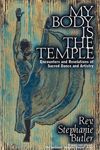 |
Butler, Stephanie. My Body Is the Temple, Encounters and Revelations of Sacred Dance and Artistry. Fairfax, VA: Xulon Press, 2002. |
 |
Hedgeman, Denita. Guidelines to Starting and Maintaining a Church Dance Ministry. Mustang, OK: Tate Publishing & Enterprises, LLC, 2007. |
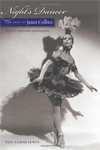 |
Lewin, Yael Tamar. Night’s Dancer, The Life of Janet Collins. Wesleyan University Press, 2011 |
Notes
1. Tanner, Michael. “The Gospel According to Brother Michael: A Brief History of Anthem, Spiritual, and Gospel Music from Early Slavery to the Mid Twentieth Century).” Crosscurrents. Online location: http://www.kusp.org/playlists/crosscurrents/history.html (accessed 27 January 2012).
2. Glass, Barbara. African American Dance: An Illustrated History. Jefferson, NC: McFarland & Company, Inc., 2007.
3. Coleman, Lucinda. “Worship God in Dance.” Renewal Journal #6 (1995): 35–44. Online location: Renewaljournal.com
4. Tanner, Michael. “The Gospel According to Brother Michael.”
5. Lewin, Yael Tamar. Night’s Dancer: The Life of Janet Collins. Middletown, CT: Wesleyan University Press, 2011.
6. “The Lord Is My Light.” Text and Tune by Lillian Bouknight. African American Heritage Hymnal. Chicago, IL: GIA Publications, 2001. #160. On the Compact disc featuring James Cleveland. I Don’t Feel No Ways Tired. Jackson, MS: 601 Records, 1998.
7. “Whatever You Want, God’s Got It.” By Milton Bronson. The Chicago Mass Choir: Project Praise, Live in Atlanta. New Haven, CT: New Haven Records, LLC, 2005.
8. “Total Praise.” By Richard Smallwood. Richard Smallwood: Adoration (Live in Atlanta). Jive, Verity/Zomba, 1996.
9. “Oh, How Precious.” By Kathy Taylor Brown. Kathy Taylor Live: The Worship Experience. Indianapolis, IN: Tyscot, 2008.



